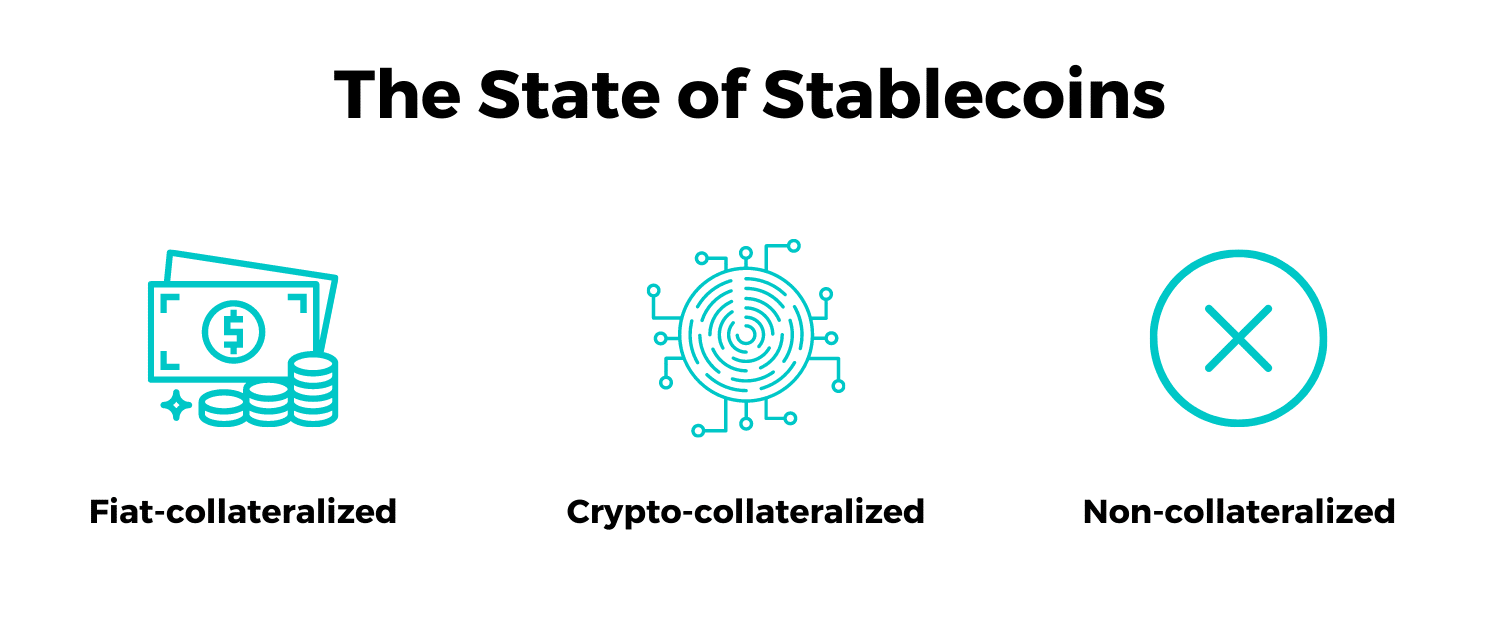One of the easiest ways to understand stablecoins and their purpose is by thinking of traditional finance. For example, let’s say that you own stocks and bonds for long term purposes, and then you also have cash in bank accounts for regular, short term purchases.
The cryptocurrency environment follows a very similar framework.
Some investors may own a certain cryptocurrency—such as bitcoin—as a long-term investment but since the prices are relatively volatile, the asset isn’t suited for regular purchases or transactions. Stablecoins were developed to stabilize prices and be a medium of exchange, similar to how the dollar is used for transactions.
In this article, we’re going to dive into stablecoins, explain their purpose, and walk through some of the risks and drawbacks that come with them.
What Are They and What’s Their Purpose?
A stablecoin is a type of cryptocurrency whose value is tied to an external reference or asset. This is what helps make them more ‘stable’ over time, compared to other cryptos that have no correlation to an existing asset. A large portion of existing stablecoins peg their value to the dollar and the result is a digital currency with similar stability to the dollar.
Some stablecoins provide 1:1 backing, meaning that for every unit of standard currency invested, you receive one token. In theory, you could cash out the digital currency at any time and receive fiat (cash) back at the same 1:1 rate. This is an example of a fiat-collateralized stablecoin. For a basic example, some stablecoins can be viewed like the US dollar and there there is one coin, USDC (US Dollar Coin), that is known to be backed 1:1 by the US Dollar in its reserve.
In addition, there are also crypto-collateralized stablecoins. The same concept, except rather than being backed by fiat currency, they’re backed by other cryptocurrencies. And while some stable coins take this extra step of backing their coins, not all do.

Regulatory Concerns
Given their $100 billion+ market cap, stablecoins are beginning to get a closer look from regulators. While some issuers have state regulations and requirements they must meet, overall, there’s minimal regulatory oversight.
As more investors allocate funds to stablecoins, it’s likely that more laws and more clarity is created around the space. Some changes that could take place may consist of regular audits of the issuing company, or more bank-like operating and reporting procedures.
One of the most popular, and most scrutinized, stablecoins is Tether. They have boasted that every coin is backed 1:1 with the US dollar, but an investigation found that 76% of its reserves are held in cash or cash equivalents, yet only 4% was held in actual cash1. The remainder was held mostly in short-term debts and commercial papers.
Knowing this, you can begin to see the risk that could come with investing in a stablecoin in the event of a market decline. If investors begin requesting money and cashing out, liquid reserves may not be available to fulfill all the requests, potentially causing a sharp decline in price.
The Advantages and Risks of Stablecoins
If wanting to invest in crypto without experiencing all of the volatility that comes with it, stablecoins provide an alternative place to park some cash. However, to determine the safety and legitimacy of a stablecoin, it’s crucial that you read the issuer’s statements and look through their reserve report. Doing due diligence on investments is prudent in general, but when it comes to crypto, it’s even more important.
Stablecoins are mostly used by people who are already invested and transacting in crypto as a way for easier conversions and transfers. However, while stablecoins shouldn’t be viewed as a way to capture significant gains since their role is to provide price stability, some coins give the ability to earn interest much like a high-yield savings account.
Some additional risks include:
Regulatory risk: Regulatory risk is the most prominent risk as there is currently minimal oversight or regulation around the space.
Reserve risk: Depending on how a stablecoin is structured, its reserve may or may not be able to withstand a market sell-off.
Security risk: All cryptocurrencies must be held or stored in some sort of digital location—whether it be a custodial or non-custodial wallet—and because of this, security risk is present.
The Takeaway
The goal of stablecoins is to provide price stability in a market that is known to be highly volatile, so that it can more easily be used as a true currency. Even though they may appear to be lower risk, crypto is still an unregulated investment and it’s important to understand the potential risks.
1. Lopatto, Elizabeth. The Tether Controversy, Explained. The Verge. August 16, 2021.



